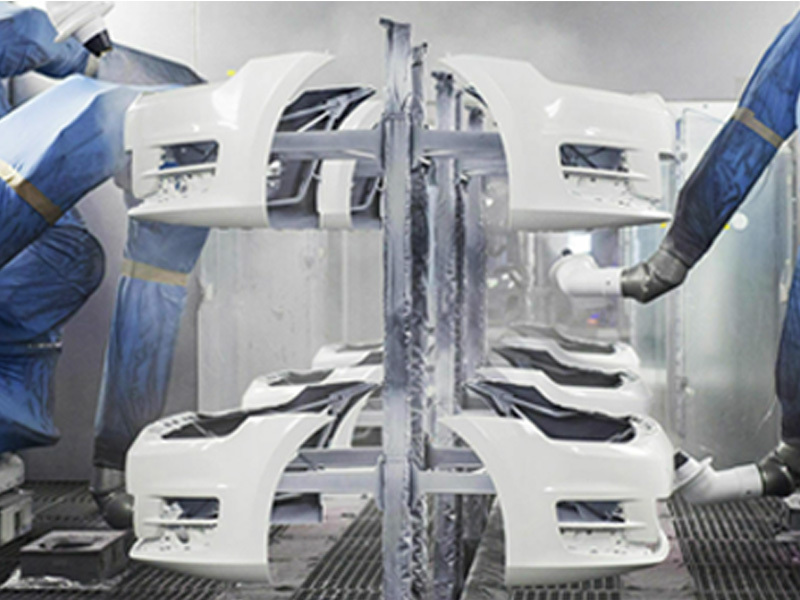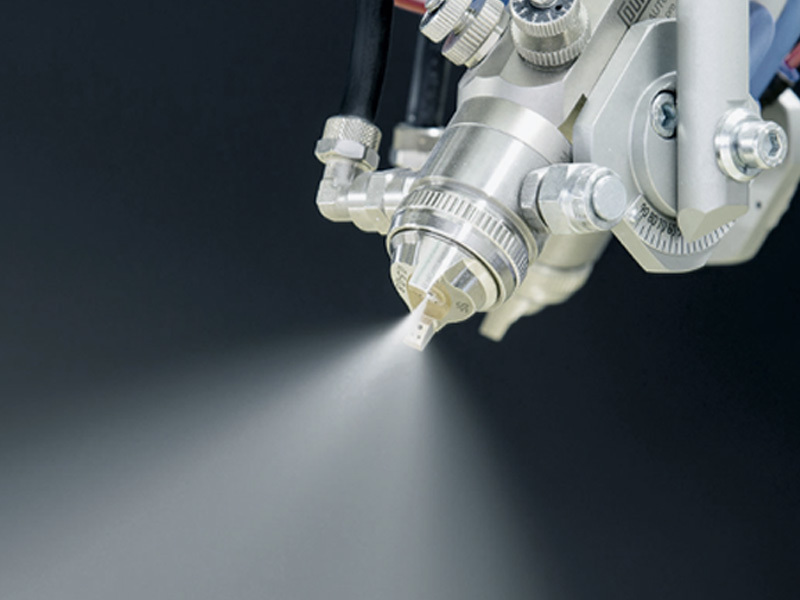Meeting Industry Standards with Environmental Circuit Board Ink Coating Lines: A Comprehensive Guide
Release time:
2025-06-30
Meeting Industry Standards with Environmental Circuit Board Ink Coating Lines Table of Contents 1. Introduction to Environmental Circuit Board Ink Coating Lines 2. Importance of Meeting Industry Standards 3. Overview of Circuit Board Ink Coating Processes 4. Environmental Impacts of Traditional Ink Solutions 5. Advantages of Using Environmental Ink Coating Lines 6. Technol

Meeting Industry Standards with Environmental Circuit Board Ink Coating Lines
Table of Contents
- 1. Introduction to Environmental Circuit Board Ink Coating Lines
- 2. Importance of Meeting Industry Standards
- 3. Overview of Circuit Board Ink Coating Processes
- 4. Environmental Impacts of Traditional Ink Solutions
- 5. Advantages of Using Environmental Ink Coating Lines
- 6. Technological Advancements in Ink Coating Lines
- 7. Best Practices for Implementing Environmental Coating Solutions
- 8. Case Studies: Success Stories in Sustainable Coating
- 9. Frequently Asked Questions
- 10. Conclusion
1. Introduction to Environmental Circuit Board Ink Coating Lines
In the fast-evolving landscape of electronics manufacturing, **environmental circuit board ink coating lines** are becoming crucial for businesses aiming to meet stringent industry standards while enhancing their sustainability efforts. As regulations tighten and consumer awareness grows, manufacturers are compelled to adopt eco-friendly solutions that not only comply with legal requirements but also support environmental stewardship.
This article will delve into the various aspects of environmental circuit board ink coating lines, offering insights into how these technologies contribute to meeting industry standards and promoting sustainable practices.
2. Importance of Meeting Industry Standards
Meeting industry standards is not just a regulatory requirement; it serves as a benchmark for quality, safety, and environmental responsibility. For manufacturers in the electronics sector, compliance with standards such as IPC-610 and RoHS is vital. These standards govern various aspects, including materials used in production, waste management, and product safety.
By adhering to these standards, companies can:
- **Enhance Market Reputation**: Compliance boosts consumer trust and brand loyalty.
- **Access New Markets**: Many regions enforce strict environmental regulations, making compliance essential for market entry.
- **Reduce Risks**: Meeting standards minimizes the risk of penalties and legal consequences.
3. Overview of Circuit Board Ink Coating Processes
Circuit board ink coating involves applying a protective layer to printed circuit boards (PCBs). This process can utilize various inks, including traditional solvent-based inks and newer, environmentally friendly options. The primary goals of ink coating include:
- **Protection**: Safeguarding the circuit board against environmental damage.
- **Electrical Insulation**: Preventing short circuits.
- **Aesthetic Appeal**: Providing a uniform, professional finish.
The transition from conventional inks to **environmental inks** represents a significant advancement in the industry. These eco-friendly options are formulated without harmful solvents and comply with various environmental regulations.
4. Environmental Impacts of Traditional Ink Solutions
Traditional ink solutions often contain volatile organic compounds (VOCs) and harmful chemicals that pose significant environmental risks. The manufacturing and disposal processes of these inks contribute to:
- **Air Pollution**: VOCs can release harmful emissions into the atmosphere, contributing to air quality issues.
- **Water Contamination**: Improper disposal can lead to the contamination of water sources.
- **Waste Generation**: Excessive waste from traditional inks creates landfill challenges.
Understanding these impacts highlights the necessity for industries to pivot towards more sustainable practices.
5. Advantages of Using Environmental Ink Coating Lines
Adopting **environmental ink coating lines** offers numerous advantages, including:
- **Reduced Environmental Footprint**: Eco-friendly inks minimize pollution and waste.
- **Regulatory Compliance**: Using compliant materials helps businesses avoid legal penalties.
- **Enhanced Product Performance**: Many environmental inks provide superior durability and adhesion compared to traditional options.
- **Market Differentiation**: Companies can position themselves as leaders in sustainability, appealing to eco-conscious consumers.
These benefits not only support compliance but also enhance the overall performance and reputation of manufacturers.
6. Technological Advancements in Ink Coating Lines
Recent advancements in technology have revolutionized the way environmental ink coating lines operate. Key innovations include:
- **Digital Printing Technology**: This offers precision and reduces waste compared to traditional methods.
- **Automated Systems**: Automation streamlines the coating process, improving efficiency and consistency.
- **Advanced Curing Techniques**: These methods ensure faster drying times, reducing production delays.
By leveraging these technologies, manufacturers can enhance their productivity while maintaining compliance with environmental standards.
7. Best Practices for Implementing Environmental Coating Solutions
For companies looking to transition to an **environmental coating line**, several best practices can guide implementation:
- **Conduct Thorough Research**: Understand the specific requirements and standards applicable to your region and industry.
- **Choose the Right Materials**: Select inks and coatings with verified environmental certifications.
- **Train Employees**: Ensure that staff are knowledgeable about new processes and the importance of sustainability.
- **Monitor and Audit**: Regularly review processes and compliance to identify areas for improvement.
These practices will facilitate a smoother transition and ensure long-term success in adopting sustainable practices.
8. Case Studies: Success Stories in Sustainable Coating
Examining real-world examples can provide insights into the effectiveness of environmental circuit board ink coating lines. Below are a few notable case studies:
- **Company A**: After implementing an environmental coating line, Company A reduced their VOC emissions by over 50% while improving coating durability. Their commitment to sustainability attracted new clients and enhanced their brand reputation.
- **Company B**: By switching to eco-friendly inks, Company B not only complied with RoHS standards but also decreased production costs due to reduced waste. Their innovative approach led to increased market share and recognition as an industry leader.
These success stories underscore the tangible benefits of adopting environmentally friendly practices in circuit board manufacturing.
9. Frequently Asked Questions
What are environmental circuit board ink coating lines?
Environmental circuit board ink coating lines utilize eco-friendly inks to apply protective coatings on printed circuit boards, ensuring compliance with industry standards.
Why is it important to meet industry standards in circuit board manufacturing?
Meeting industry standards ensures product quality, safety, and environmental responsibility, enhancing brand reputation and market access.
What are the benefits of using environmental inks?
Environmental inks reduce pollution, enhance product performance, ensure regulatory compliance, and can differentiate a brand in the market.
How can companies transition to environmental ink coating lines?
Companies can transition by conducting research, selecting compliant materials, training staff, and implementing best practices to ensure smooth integration.
What technologies are improving environmental coating processes?
Technological advancements such as digital printing, automation, and advanced curing techniques are enhancing the efficiency and effectiveness of environmental coating processes.
10. Conclusion
The shift towards **environmental circuit board ink coating lines** represents a crucial step for manufacturers looking to comply with industry standards while promoting sustainability. By understanding the benefits of eco-friendly inks, leveraging technological advancements, and implementing best practices, companies can not only enhance their operational efficiency but also contribute positively to the environment. Embracing these changes is not just a compliance issue; it's an opportunity to lead in a rapidly evolving industry and foster a more sustainable future.











